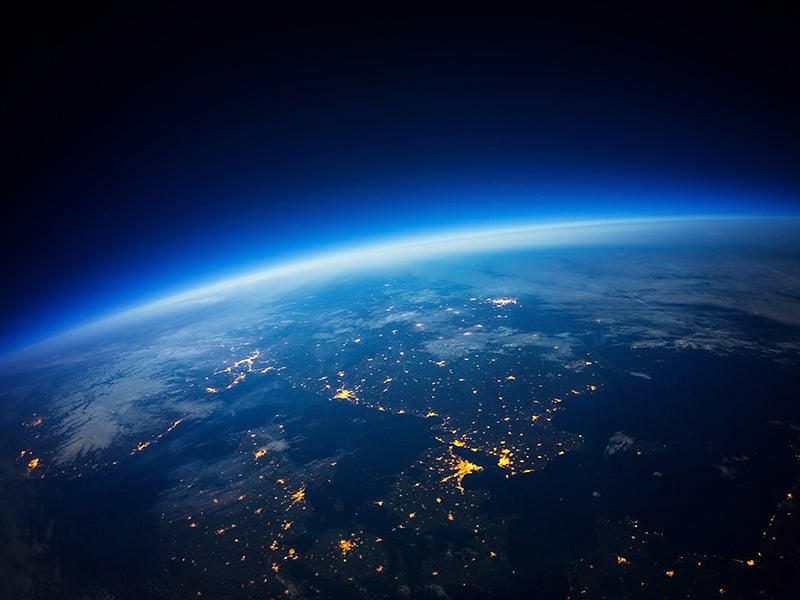Australia is completely reliant on data from foreign-owned satellites for its weather forecasting, resource and water management and disaster response and this is creating a “sovereign risk”, according to leading scientists.
In a new plan for Australian space science released Thursday, scientists say the risk must be addressed over the coming decade with a more complete and sustainable space ecosystem.
“Meeting Australia’s future earth observation needs requires appropriate sovereign capability including enhanced science, observations, analysis and modelling capability,” University of Newcastle emeritus professor Fred Menk said.

Professor Menk and colleagues at the Australian Academy of Science have developed a 10-year plan to improve Australian space science, which the group warned is in danger of being left behind in the latest industry-led space race.
The plan calls for a new national research priority in space science, a lead scientist role within the Australian Space Agency, and a bigger commitment to a national space program, including ongoing missions, workforce development and Australian-owned earth observation satellites.
This would develop the research and innovation capabilities necessary to develop a sustainable Australian space ecosystem, according to the Academy.
“Australia must have a space industry of its own – one that we can turn into a high-tech manufacturing, knowledge-based, research supported, export industry in a world hungry for it,” Professor Menk said.
“An internationally competitive space industry in Australia will depend on a foundation of excellence in science and technology.”
Better space science capabilities would see Australia become a bigger contributor to global space programs and lead more of its own with locally made payloads and spacecraft, according to the plan.
The Academy said local researchers already perform well in downstream space sciences – taking data from satellites to create useful information for governments, private industry and individuals to make decisions – but lack upstream capabilities and access to Australian owned space infrastructure.
Since launching in 2018, Australia’s space agency has focused on developing the local commercial space industry rather than the government led operations of foreign agencies like NASA and the European Space Agency.
The Academy’s plan has been designed to link with the government agency’s industry focus for a more holistic approach, according to University of Queensland earth observation scientist Professor Stuart Phin.
“Putting those things together, we’re able to build the science that’s going to support industry development, government development, community development, for using space capabilities, particularly in your observation area. So that we can have that complete set of activities to design, build and launch satellite systems to deliver information for use in Australia and the rest of the world,” Professor Phin said.
Space science will be increasingly important, Professor Phin said, with applications for government, industry and Defence in earth observation.
“[It’s] really about looking at how our environments are changing. And that’s going to be essential for tracking bushfires and their extent and predicting them, doing carbon accounting and biomass assessment from our urban areas to our whole country, looking at our marine resources as contributing the mapping reefs and their condition around Australia and globally,” he said.
Currently Australia relies on global partners to access the data used in many of these applications. According to the Academy’s new report, there is no guarantee this access will continue.
The reliance on other countries’ space assets – typically Japan and the US – means Australia loses its access to things like weather forecasting or natural disasters monitoring if the satellites break or the countries restrict access.
“This imposes a sovereign risk, especially if Australia is regarded as an unequal contributor to the global [earth observation] community,” the report said.
Professor Menk told InnovationAus while the commercial space sector is developing well and companies are increasingly able to attract investment in Australia, the funding for more fundamental space science research has not kept pace and remains a barrier to the Australian space research and development sector.
“The funding environment for applied work and work which will lead to industry outcomes has improved a lot in recent years and I suspect will continue to grow because industry is increasing its ability to attract funding, for example, venture capital funding,” he said.
“But the fundamental funding the funding for basic research, which may or may not bring breakthroughs and innovations hasn’t really increased.”
The Academy’s plan calls for space science to be recognised in the National Science and Research Priorities, which would see the area receive more publicly funded research grants than the $2 million per year it currently averages.
Do you know more? Contact James Riley via Email.


At the end of WWII the Australian Government developed a plan to develop the Australian motor vehicle industry. It partnered with GM to develop Holden. The only mistake we then made was to keep tariffs so high that we attracted more manufactirers – we only needed one.
Ditto the space industry. We need two things as far as I can see. We need a launch vehicle partner and we need a partner for a LEO constellation. We can get both with a strategic partnership with Space X. Heck, we could extend that to bateries and cars with Tesla. By all means choose the partner by some kind of tender – but don’t wait for them.